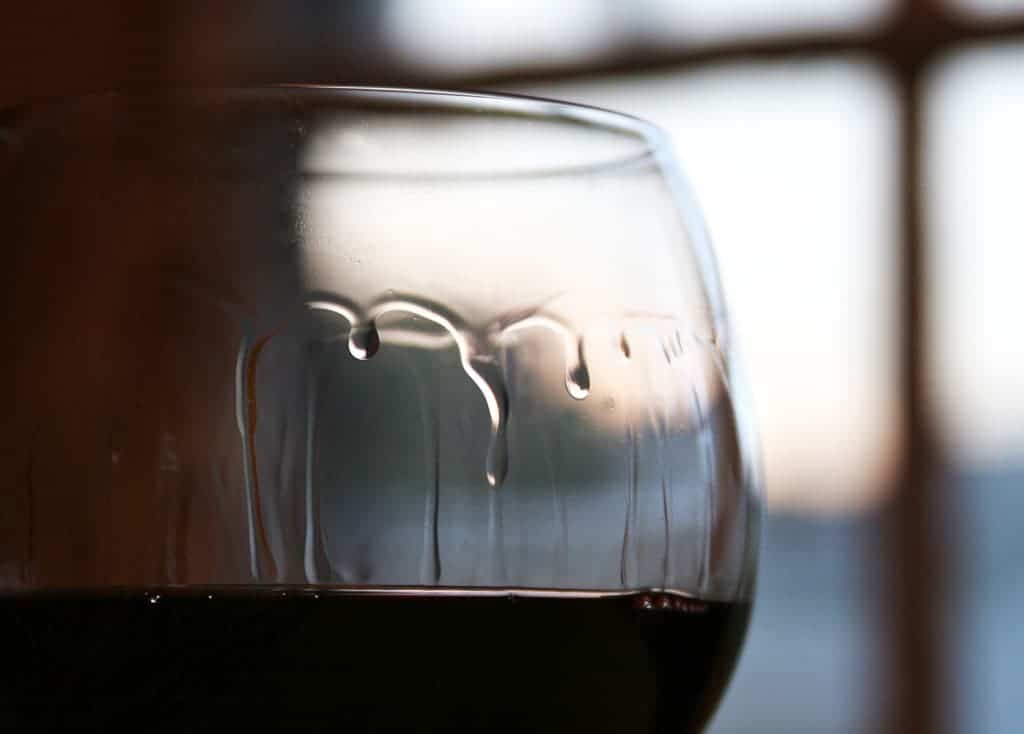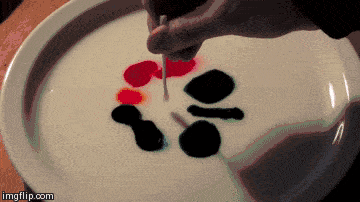Ever heard of “tears of wine” or the phrase “the wine caught legs”? It’s common when you pour wine in a glass to see a ring of clear liquid that forms near the top the glass above the surface of wine. These drops continuously form and fall in rivulets back into the liquid and are influenced by a physical phenomenon called Marangoni convection, or flow.
Tug and pull
Marangoni convection is the tendency for heat and mass to travel to areas of higher surface tension within a liquid. Surface tension is a property of a liquid that causes the surface portion of liquid to be attracted to another surface, such as a drop of mercury that forms a cohesive ball in a thermometer or droplets of water on a well-waxed car.
Imagine a volume of liquid held in a container, say wine in a glass. In the middle of the liquid, the wine molecules are surrounded on all plains by other wine molecules, so everything’s fine and dandy – the molecules push each other up and down equally in perfect equilibrium. At the surface, however, the topmost wine molecules are interacting with two mediums: molecules above the surface (made of air), and those below the surface (wine). This imbalance in molecular forces is what causes surface tension. When the surface tension is constant it behaves like a very tight rubber band. Poke a hole in it and everything will try to pull away from the hole. Likewise, if the surface tension is disturbed, molecules will try to flow from low surface tension to higher surface tension.
Confused, yet? Here’s a simple experiment you can do at home really quick that will demonstrate surface tension: pour milk (higher fat content is better) and food coloring in a shallow container. Next, add a drop of soap or alcohol and prepare for a really cool and colourful spectacle. If you’re too lazy, though, feel free to watch the video below of the experiment.
Dyed Milk Spread from Flow Visualization @ CU Boulder on Vimeo.











